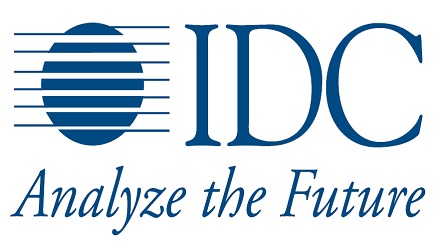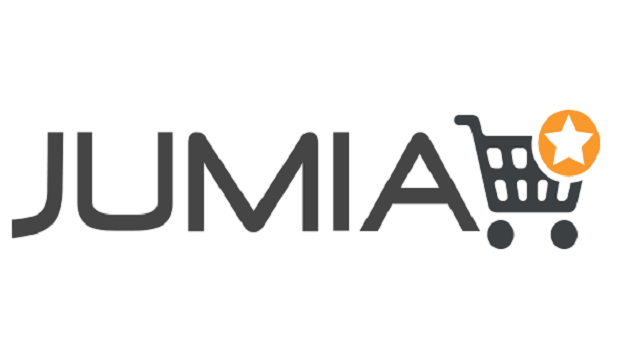E-Business
Cisco, CheckPoint Lead Security Appliance 2Q2014 Growth-IDC

According to the International Data Corporation (IDC) Worldwide Quarterly Security Appliance Tracker, the security appliance market continues to see positive momentum, as Cisco leads in the market
In the second quarter of 2014 (2Q14), worldwide factory revenue grew 7.3% year over year to $2.2 billion.
This was the 19th consecutive quarter of positive growth, dating back to the fourth quarter of 2009.
Second quarter shipments also grew, totaling 500,178 units, up 4.9% over the 476,903 units shipped in 2Q13.
Geographically, Latin America saw the highest growth in the quarter at 24.5%.
Asia/Pacific also saw strong appliance sales, with revenue increasing 11.3% compared to 2Q13.
North America grew 6.0% in the quarter while accounting for 39.4% of market revenues.
Western Europe saw its highest growth since the first quarter of 2011, with revenue increasing 6.8% year over year.
Cisco continues to lead the overall security appliance market with 18.4% share of factory revenue in the second quarter with year-over-year growth of 19.7%.
Check Point again held the number two spot for the quarter as revenue increased 9.8% year over year.
Fortinet remained the third largest security appliance vendor as its market share increased to 7.3% on growth of 24.6% over 2Q13.
Palo Alto Networks rose to the number four spot on growth of 57.6%.
Intel Security rounded out the top 5, growing 12.9% year over year and accounting for 5.3% of the market.
Functional Market Results
At the functional market level, the Unified Threat Management (UTM) segment saw the largest year-over-year revenue increase at 21.5% and accounted for 43.6% of security appliance revenue in 2Q14.
The Firewall market remained constant year over year, and represented 19.2% of security appliance revenue in the quarter.
The Content Security and Intrusion Detection and Prevention (IDP) segments made up 17.2% and 16.0% of the market, respectively, with Content Security declining -0.9% and IDP declining -1.2% year over year.
“With countless Web site hacks and data thefts, network encryption and information protection are more important than ever,” said Ebenezer Obeng-Nyarkoh, senior research analyst, Worldwide Trackers Group “Trying to track new security vulnerabilities can be overwhelming because so many Web-based applications use services that are not up to date on all of their network and services.”
IDC’s Worldwide Quarterly Security Appliance Tracker is a quantitative tool for analyzing the global security market on a quarterly basis.
The Tracker includes quarterly shipments and revenues (both factory and customer), segmented by vendor, security function, product family, model, region, operating system, and price band.
E-Business
GenAI Adoption Among African workers Outpace Global Peers

Africa’s workforce is embracing artificial intelligence (AI) at a faster pace than global peers, but pressure is mounting for organisations to ramp up digital skills development as generative AI (GenAI) begins reshaping roles across industries.

This is according to PwC’s Global Workforce Hopes and Fears Survey 2025, which shows a continent ready for AI-enabled transformation, but facing a narrowing window to prepare, through skills development initiatives.
The survey, covering nearly 50 000 workers worldwide and 1 753 across South Africa, Algeria, Kenya, Morocco and Nigeria, finds that African employees are already integrating AI into daily operations.
Sixty-four percent of respondents in Africa used AI tools in the past year, compared to 54% globally, and the sentiment is overwhelmingly positive. While only 17% report using GenAI every day, confidence in its benefits is high: 76% believe GenAI improves work quality, and 72% expect AI-driven productivity gains within three years.
In SA, executives are even more bullish, as 91% say AI has already lifted both productivity and work quality — a signal that leadership is pushing harder toward AI-enabled ways of working, notes the survey.
However, this optimism is coupled with rising concern about future readiness. Only 35% of African workers believe their skills will still be relevant three years from now. With GenAI expected to affect nearly half of all job roles, PwC warns that the continent’s workforce risks falling behind unless organisations accelerate large-scale reskilling.
Despite the pressures, employees are not standing still. PwC notes that African workers outperform their global peers in proactive learning, recording 15% higher participation in skills-building and receiving 6% more support from managers. This indicates that both workers and immediate supervisors recognise the pace of AI adoption and are pushing to adapt.
PwC Africa people and organisation leader, Dr Dayalan Govender, says the moment calls for decisive leadership. Organisations, he argues, must integrate AI into workforce strategies, accelerate digital adoption, and expand upskilling programmes at scale.
“Africa’s workforce is optimistic and ready for change, but leaders must accelerate digital adoption and invest in future-ready skills to convert this optimism into sustainable growth,” he says.
Beyond the technology shift, the survey captures a workforce hungry for growth but constrained by financial pressure. Many employees are preparing to make career moves: 45% plan to request a raise, and another 45% aim for a promotion in the next year. Yet household financial stability remains strained, with only a third of respondents reporting any money left over for savings.
Still, Africa’s workplaces continue to show strong foundations of trust and purpose — elements PwC believes will be critical in navigating GenAI disruption. More than 55% of workers trust management, and two-thirds say their work feels meaningful, both above global averages.
With AI adoption rising and employees motivated to reinvent their careers, PwC warns that the coming years will determine whether Africa’s early optimism translates into long-term competitiveness as GenAI transforms the world of work.
The report calls for embedding AI into workforce strategies to bridge the gap between optimism and practical adoption, scaling upskilling initiatives to prepare for GenAI disruption, and fostering trust and psychological safety to retain talent and drive innovation.
“For employers, these findings are a stark reminder that they can and should do more to help workers understand, adopt, and embrace AI’s transformative power.
“Employers may need to pay special attention to entry-level workers, nearly a third of whom say they’re worried to a large or very large extent about AI’s impact on their future, even as they’re also curious (47%) and optimistic (38%) about its long-term societal effects,” notes the report.
E-Business
Nigeria Records Highest Weekly Cyberattacks in Africa — Report

Nigerian organisations are facing the highest volume of weekly cyberattacks in Africa, according to the newly released African Perspectives on Cyber Security Report 2025 by Check Point Software Technologies Ltd., a global leader in cybersecurity solutions.

The report revealed that Nigerian firms experience an average of 4,200 attacks per week, significantly higher than the continental average of 3,153 and 60 per cent above the global average of 1,963 attacks per organisation.
The findings highlight a sharp rise in attacks across Africa, driven largely by artificial intelligence-enabled threats.
Kingsley Oseghale, country manager for West Africa at Check Point, said attackers are increasingly using AI to automate phishing, impersonation, and cloud exploitation.
“AI has become part of the attack surface,” Oseghale said. “Attackers are using it to automate phishing and identity theft at scale. The only effective response is prevention-first security that combines visibility, governance, and AI protection.”
The report noted that cybercriminals are exploiting exposed identities and misconfigured systems to target critical sectors, including finance, energy, telecoms, and government.
Identity-led intrusions, AI-generated phishing campaigns, and multi-vector ransomware are on the rise.
Across the continent, Check Point identified key trends in different markets. Nigeria is experiencing business email compromise and cloud exploitation; South Africa faces rising ransomware, smishing, and botnet infections such as Vo1d and XorDDoS; Kenya has seen ransomware targeting critical energy infrastructure; and Morocco has experienced coordinated government and education-sector disruptions via DDoS and website defacement attacks.
The report highlights five major shifts shaping Africa’s cyber risk in 2025.
Traditional ransomware has evolved into data-leak extortion, AI-generated deception is widespread, and identity has emerged as the new security perimeter.
Weak cybersecurity, the report warned, can now affect international market access under regulations such as the EU’s NIS2 Directive, making digital resilience an economic necessity.
The study urged African businesses and governments to adopt prevention-first security strategies, including continuous risk assessment, regulatory readiness, and public-private collaboration.
Oseghale emphasised that, as AI reshapes operations, cybersecurity must shift from reaction to prediction.
“The real challenge is not adopting new technology but securing the trust that underpins it,” he said.
E-Business
Jumia’s Data Shows Nigerians Turning to Digital Retail to Navigate Inflation Pressures

As Black Friday 2025 unfolds across Nigeria, new insights from Jumia’s Q3 2025 financial results reveal that more Nigerians are relying on digital retail to navigate inflation and rising living costs.

The data points to a more deliberate, value-driven shopper, one using online platforms to stretch budgets, compare options quickly, and extract more value from each purchase.
Jumia reported a 30 percent year-on-year increase in physical goods orders, while Gross Merchandise Value for physical goods rose by 43 percent.
This stronger GMV growth highlights a clear behavioural shift: consumers are assembling higher-value baskets by combining essentials with premium or long-term household items. Online retail is serving as a tool for strategic planning, not just convenience.
According to Temidayo Ojo, Chief Executive Officer of Jumia Nigeria, Black Friday now plays a more critical economic role. “Households are using digital retail to defend purchasing power. They plan their lists, compare prices instantly, and rely on the reliability and convenience that e-commerce offers,” he said.
This year’s Black Friday trends show growing demand in categories that directly support daily living. Household essentials and FMCG products are seeing significant uptake as families stock up during price drops. Home and kitchen equipment is also experiencing stronger demand as shoppers prioritise practical, durable tools. Affordable fashion and beauty products are gaining momentum as discounts make them more accessible.
Consumer behaviour in the lead-up to the sales period further reinforces this shift. Jumia recorded a notable increase in “Add to Wishlist” and “Add to Cart” activity, signalling more planning and fewer impulse purchases. The gap between GMV and order growth indicates that customers are optimising baskets using bundles, vouchers, and promo combinations, behaviours uniquely suited to digital platforms.
With inflation intensifying the need for smarter buying, trust markers on Jumia, such as verified sellers, official brand stores, ratings, and clear return policies, are becoming more central to decision-making. Authenticity and durability now outweigh the appeal of the lowest price.
Jumia’s logistics footprint is making these benefits available nationwide. Its 30,000 sqm Isolo fulfilment centre, 480 pickup stations, and 62 logistics partners ensure that customers in secondary and peri-urban cities enjoy the same deals as those in major hubs, reducing travel burdens and adding financial value.
Overall, Jumia’s Q3 data and Black Friday trends show that Nigerians are turning to digital retail as a practical, strategic response to inflation, using e-commerce to manage budgets, preserve purchasing power, and make more informed buying decisions.

 E-Business2 days ago
E-Business2 days agoReport says Human Error Fuels Breaches as Only Half of Professionals Receive Cybersecurity Training

 E-Financial2 days ago
E-Financial2 days agoFBNQuest Merchant Bank Confirms New Ownership Structure, Sets Stage for Future Growth

 E-Business2 days ago
E-Business2 days agoCyber Tsunami Hits Nigeria as Breaches Surge 1,047%, esentry Q3 Report Reveals

 General News2 days ago
General News2 days agoNigeria’s GDP Rises to 3.98% in Q3 2025, Driven by Agriculture, ICT, and Finance

 General News2 days ago
General News2 days agoIHS Nigeria Leads Gender Based Violence Awareness Walk, Reaffirms Zero Tolerance with Advocacy Seminar

 E-Financial2 days ago
E-Financial2 days agoMoniepoint MFB Launches Moniebook to Transform MSMEs Operations

 E-Business1 day ago
E-Business1 day agoJumia’s Data Shows Nigerians Turning to Digital Retail to Navigate Inflation Pressures

 Telecom2 days ago
Telecom2 days agoALTON Commends NSCDC Ogun State for Outstanding Performance in Protection of Telecom Infrastructure


























